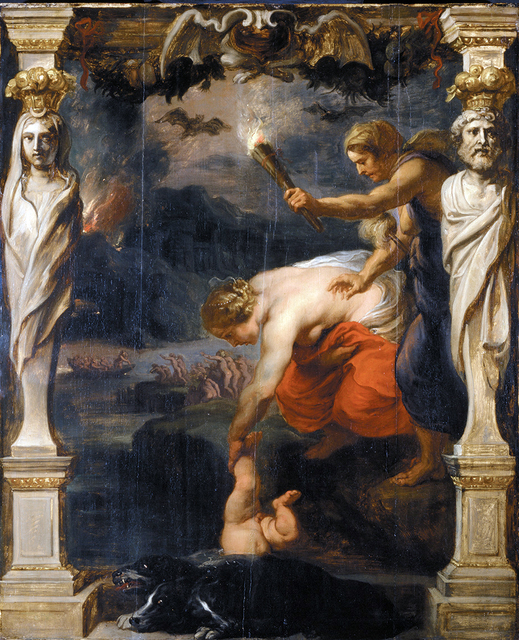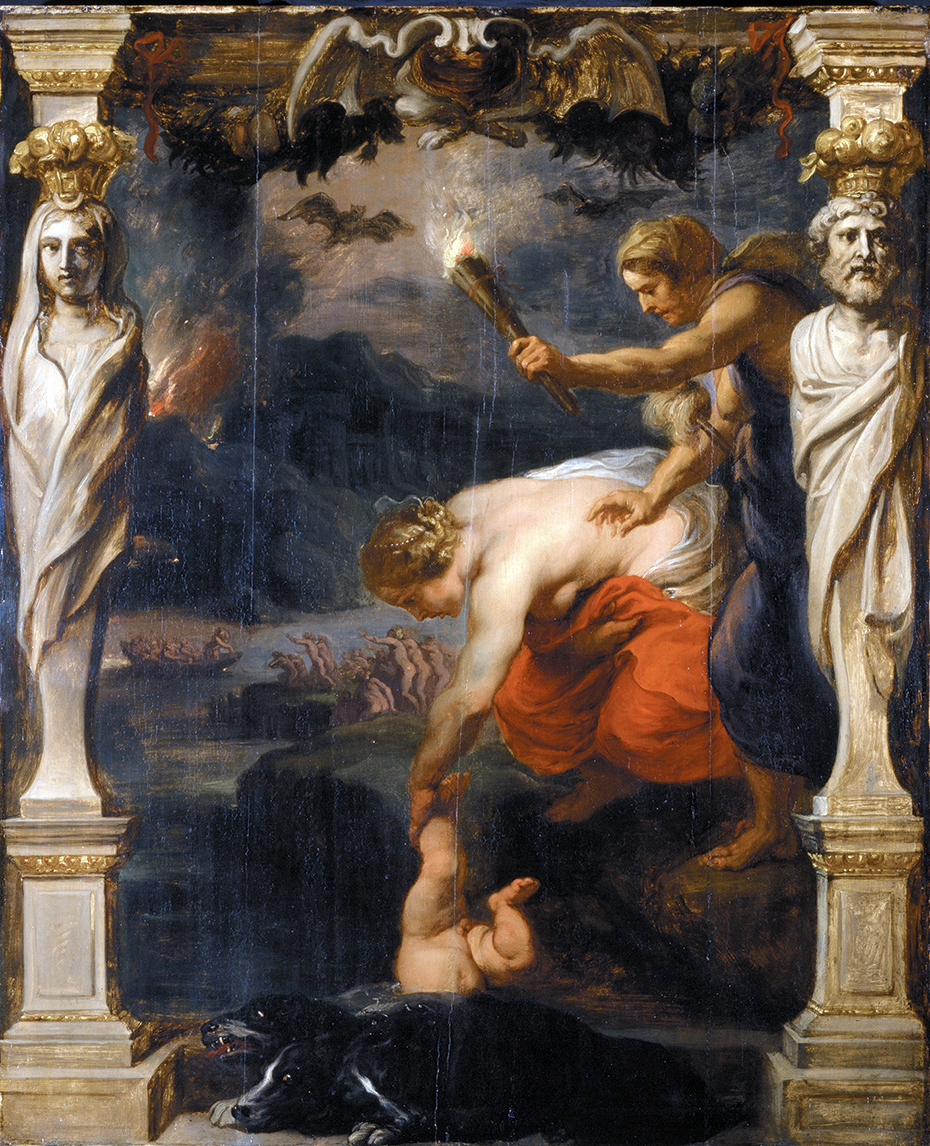Thetis Dipping the Infant Achilles into the River Styx

Full description
The painting Thetis Dipping the Infant Achilles into the River Styx (1635), by the 17th-century artist Peter Paul Rubens, depicts Thetis dipping a baby Achilles into the River Styx.
Thetis is one of the most significant Nereids, the daughters of the sea god Nereus. Although Thetis was initially desired by powerful gods, like Zeus and Poseidon, after a prophecy foretold that she would “give birth to a son greater than his father,” it was decided that she should be married to a mortal, Peleus. Thetis initially resists this marriage and uses all her powers as a shapeshifter to avoid the mortal Peleus, but eventually relents after being captured. This union between Thetis and Peleus leads to the child, Achilles.
Because Thetis still desires immortality for her son, she dips him in the River Styx, the River of the Underworld that acts as a bridge from the world of the living to Hades, which is guarded by the three-headed dog, Cerberus. To the right of Thetis, Charon, the ferryman who guides the living that earned the rites of burial can be seen with his illuminating torch. After being dipped in the river, Achilles is granted great protection, with one exception: the part of his heel that was not submerged that was being held by his mother.
Achilles, who as an adult has gained a reputation as the greatest warrior alive, withdraws from the Trojan War after feeling disrespected by King Agamemnon. While deciding whether to return to the war, his mother tells him he has two choices. He can leave the war and have a nostos or “homecoming” and live to an old age, but he would die without glory. Or he can choose to return to the battlefield, and die young, but have an “imperishable kleos” or glory that would last forever.
Achilles does choose to return to battle, where he is eventually killed after being struck in the back of his heel by an arrow, which gives rise to the term “Achilles Heel.”
Comments
to view and add comments.
Annotations
No one has annotated a text with this resource yet.
- typeImage
- created on
- file formatjpg
- file size1 MB
- creatorPeter Paul Rubens (1635)
- rightsPublic Domain
- rights holderMuseum Boijmans Van Beuningen
- rights territoryRotterdam, Netherlands


